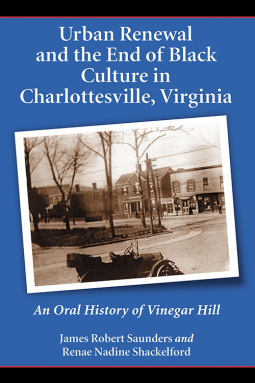
Urban Renewal and the End of Black Culture in Charlottesville, Virginia
An Oral History of Vinegar Hill
by James Robert Saunders
This title was previously available on NetGalley and is now archived.
Send NetGalley books directly to your Kindle or Kindle app
1
To read on a Kindle or Kindle app, please add kindle@netgalley.com as an approved email address to receive files in your Amazon account. Click here for step-by-step instructions.
2
Also find your Kindle email address within your Amazon account, and enter it here.
Pub Date Oct 13 2005 | Archive Date Nov 13 2017
Description
From the 1920s through the 1950s, the center of black social and business life in Charlottesville, Virginia, was the area known as Vinegar Hill. But in 1960, noting the prevalence of aging frame houses and “substandard” conditions such as outdoor toilets, voters decided that Vinegar Hill would be redeveloped. Charlottesville’s black residents lost a cultural center, largely because they were deprived of a voice in government. Vinegar Hill’s displaced residents discuss the loss of homes and businesses and the impact of the project on black life in Charlottesville. The interviews raise questions about motivations behind urban renewal.
Available Editions
| EDITION | Paperback |
| ISBN | 9780786425563 |
| PRICE | $19.99 (USD) |



